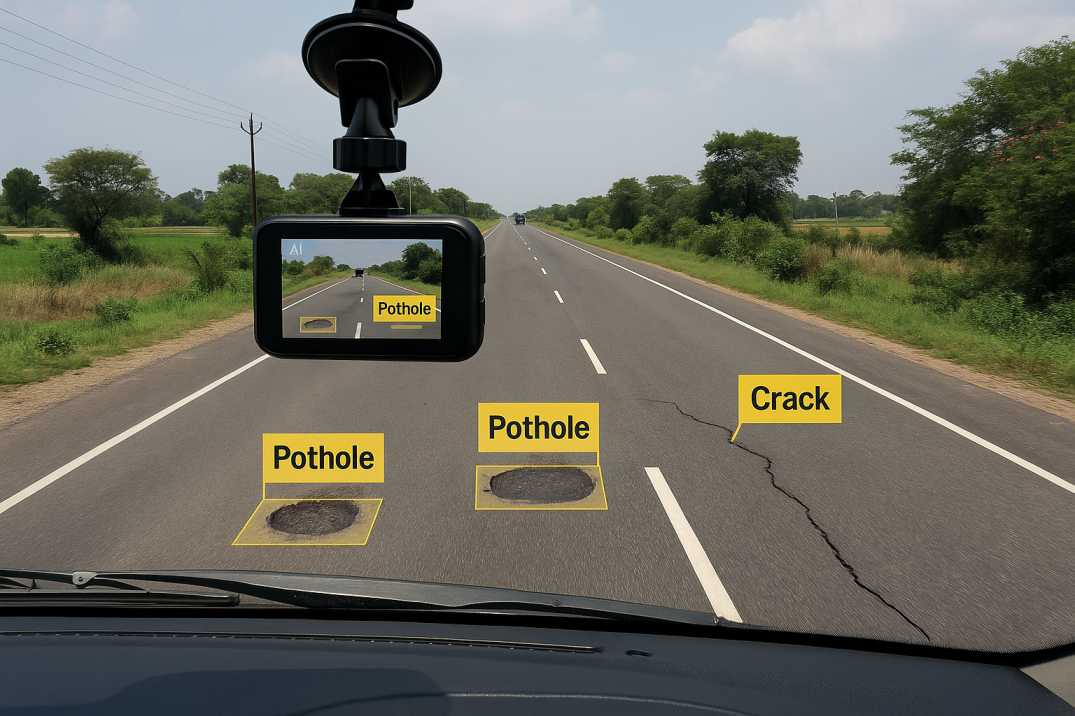Contact Us
RoadVision AI
Private Limited
Office No. 308 & 310, B Block
Ansal Chamber - 1, Bhikaji Cama Place,
Near Engineers India Limited (EIL) Bhawan, New Delhi - 110066
© 2024 | RoadVision AI | All rights reserved
India's road network is one of the largest in the world, and ensuring its durability and safety is a top priority for highway agencies and infrastructure planners. The Indian Roads Congress (IRC) has published several guidelines to ensure standardized pavement design and maintenance practices. Among them, IRC SP 35 plays a critical role in setting parameters for evaluating road conditions and validating pavement design based on actual field performance.
With the rapid evolution of AI Road Management technologies, including dashcam-based road surveys, agencies now have access to automated pavement condition surveys and GIS mapping tools that enhance data accuracy and compliance with IRC SP 35 standards. This blog explains how modern technologies help validate pavement design, improve road asset management systems, and optimize long-term maintenance strategies in India.

IRC SP 35 provides a framework for evaluating road surface conditions, identifying distresses, and determining the necessary maintenance or design validation measures for flexible pavements. It focuses on:
The data collected as per IRC SP 35 helps agencies validate whether pavement design assumptions (such as expected load-bearing capacity and performance lifespan) are meeting real-world conditions.
Historically, road condition surveys were performed manually, involving:
These methods are time-consuming, error-prone, and limited in coverage. With India’s rapidly expanding road network, relying solely on manual surveys delays decision-making and increases maintenance costs due to reactive interventions.
Modern dashcam-based road survey systems use AI-enabled cameras mounted on regular vehicles or inspection fleets. These systems capture high-resolution road imagery at traffic speeds, process data in real time, and identify pavement defects automatically.
Key benefits include:
With RoadVision AI’s automated pavement condition survey solution, agencies can quickly assess large road networks, calculate distress percentages, and assign weighted ratings as recommended in IRC SP 35.
Validating pavement design involves comparing expected vs. actual field performance of a road section. Dashcam-based surveys streamline this process:
This technology directly supports periodic condition surveys mandated under IRC SP 35, helping agencies plan renewals, strengthening, or reconstruction based on accurate, timely data.
As India moves toward smart and sustainable infrastructure, AI-powered automated surveys will be integral to road development. With dashcam-based inspections, government agencies, consultants, and contractors can ensure:
Companies like RoadVision AI are pioneering these innovations, providing scalable, high-accuracy, and IRC-compliant solutions for road inventory inspection, traffic surveys, and road safety audits.
Validating pavement design as per IRC SP 35 is no longer limited to manual, subjective surveys. Dashcam-based automated pavement condition surveys, powered by AI and GIS mapping, provide a data-driven, accurate, and cost-effective approach to assess real-world road performance. Adopting these technologies ensures long-lasting pavements, safer roads, and optimized investments in India's transport infrastructure.
RoadVision AI is transforming infrastructure development and maintenance by harnessing artificial intelligence and computer vision AI to revolutionize road safety and management. By leveraging advanced computer vision artificial intelligence and digital twin technology, the platform enables the early detection of potholes, cracks, and other road surface issues, ensuring timely repairs and better road conditions. With a mission to build smarter, safer, and more sustainable roads, RoadVision AI tackles challenges like traffic congestion and ensures full compliance with IRC Codes. By empowering engineers and stakeholders with data-driven insights, the platform reduces costs, minimizes risks, and enhances the overall transportation experience.
Book a demo with RoadVision AI to explore our AI-based road inspection solutions tailored for Indian road authorities and contractors.
Q1: What is IRC SP 35 used for in pavement management?
It sets guidelines for condition surveys, distress measurements, and serviceability indicators to validate pavement design and plan maintenance activities.
Q2: How do dashcam-based surveys improve road condition assessment?
They automate distress detection, provide objective ratings, and comply with IRC SP 35 standards, reducing time and cost versus manual surveys.
Q3: Can AI road management help reduce road maintenance costs?
Yes. Predictive analysis from AI surveys enables preventive treatments, extending pavement life and avoiding expensive reconstructions.